

“The only reader to whom I can be of any service at all is the one who will read what I write and will carefully and critically reflect upon it. Him, and him alone, I am absolutely certain of benefitting, though he conclude that I am in the wrong from beginning to end.”

Writing to Johns Hopkins University President Gilman in November 1875, William James told him, in the course of recommending Peirce for a professorship, that it was “no extravagant praise to say that of late years there has been no intellect in Cambridge of such general power and originality as his, unless one should except the late Chauncey Wright, and effectively Peirce will always rank higher than Wright. . . . I can certify that Wright thought more of [Peirce’s] ability than that of anyone he knew.”1 In a 12 February 1896 letter to Open Court Editor Paul Carus, Ernst Schröder gave him an assessment of Peirce, together with a piece of advice: “You can be sure that, however ungrateful his very contemporaries and fellow countrymen may be, the fame of Charles S. Peirce will radiate equal to that of a Leibniz or an Aristotle in all future millennia. And you can erect yourself no better monument than by joining his side as soon as possible and under full sail or flying flags” (translated from German).2 Being a determinist, Carus could not really join Peirce’s side, but he remained loyal to the latter despite occasional misunderstandings or squabbles, never entertaining any doubt about Peirce’s intellectual stature. Half a century later, Peirce Society founder Frederic H. Young reported that F. S. C. Northrop wrote to him in 1945 to say that “When one compares Peirce with previous minds, one thinks of Aristotle and Leibniz.” Charles Hartshorne echoed the remark that same year in another letter to Young: “It was the first time since Leibniz that there had been such a phenomenon: a mathematician who was a logician and a physicist and a chemist and a metaphysician.”3 Remarks in this comparative vein abound across the decades that separate us from 1914, the year Peirce died in Milford, Pennsylvania.
Peirce’s unusual powers were recognized by nearly everyone—friends or foes, colleagues and rivals—as much during his life as posthumously. There is now a sizeable collection of assessments of Peirce’s genius and occasional erraticism, a collection whose estimation of his relevance ebbs and waxes according to the philosophical fashions of the moment. Justus Buchler reported that publication of the Collected Papers was followed by a “wave of adulation” in the 1940s, itself superseded in the early fifties by “critical sanity with respect to Peirce,” but a sanity that did not extend to the then predominant misunderstanding of pragmaticism under the pen of analytical philosophers “hardly critical of their own procedures,” “looking at language myopically,” and “minimizing any distinction between the analysis of words and the analysis of intent.”4
Since the 1970s, though, and following a uniformly accelerated motion, positive interest began to wax again, and durably so, thanks to a combination of many factors, the multiplication of the publications of his works being one of them. The chronological edition, itself a much longer-term proposition than was initially conceived, has played a significant role in that sustained and growing interest, in great part thanks to the new method of systematic reading it has begun to allow. As Peirce put it in 1902, “in order to understand a philosophy, it is necessary to begin by placing one’s self in the state of mind of the author at the beginning of his speculations and follow out the course of his thoughts.”5 The chronological edition makes it easier for readers to place themselves in Peirce’s state of mind from his earliest speculations on. That ability increases the likelihood that the general understanding of Peirce’s thought will continue to grow in sophistication, fairness, and comprehensiveness, something that can be better achieved by keeping in mind Buchler’s reminder that a “writer’s meaning may not square with some of his formulations, or may not be contained in any single formulation.”6
At the end of a 1952 essay “On the Future of Some of Peirce’s Ideas,” James K. Feibleman wrote that Peirce had been first to see “the possibility of constructing an open system,” all philosophical systems having been ipso facto closed until him. Closed systems satisfy minds in quest of unshakeable convictions to be sometimes imposed upon others at the end of a gun. Open systems come from the systematic entertainment of shakable beliefs: they adjust to wavering, prophesizing that “the future of philosophy lies in the direction of tentatively-held and readily altered abstract systems” whose defense depends on persuasion rather than force. Feibleman ended by saying, “The fact nobody disputes is that Peirce made many important suggestions. If there is anything genuine to them, then to that extent we shall be obligated to him for our own future.”7
This section of our website introduces visitors to Peirce’s life with relatively brief statements regarding his biography and significance. We are working on an additional long section that will document Peirce’s versatile relevance for ongoing and future inquiry in several disciplines. According to Colin McGinn, Peirce “anticipated more of the course of 20th-century philosophy than Frege” and “was onto the right things before almost anyone else.”8 We could add that it is equally likely that Peirce anticipated much of the course of 21st-century philosophy. A sample of the “right things” includes reference theory, proper-name theory, perception theory, modal logic, the Sheffer stroke, truth tables, fallibilism, verificationism, intuitionism, semantic networks, logic machines, holistic account of meaning, game-theoretic semantics, model of inductive-probabilistic explanation, statistical interpretation of natural laws, and even virtue epistemology. Scholars have claimed that Peirce had been a forerunner of such diverse thinkers as Jung, Wittgenstein, Hempel, Reichenbach, Gödel, Popper, Kripke, Quine, Goodman, Austin, Putnam, and a host of others. It is not that Peirce merely anticipated but more importantly that, as Matthew Moore put it recently, “he [took] approaches to his problems that can give us a new bearing on our own.”9 Peirce’s importance for current thought and culture has increased dramatically in recent years as philosophy has reached beyond a narrow analytical program to the larger fields of intellectual experience that Peirce believed it was the purpose of philosophy to explore. Current interest in non-linguistic elements of communication, the rehabilitation of speculative metaphysics, global studies in abduction and theory formation, biology’s turn to biosemiotics, and the widening of semiotics’s own “methodeutic” reach to diverse fields of research, from anthroposemiotics to cosmosemiotics—all in addition to the rebirth of pragmaticism—have contributed to the sense of the ever expanding relevance of Peirce’s writings.
From original letter, William James to Daniel Coit Gilman, 25 November 1875, The Gilman Papers in the Johns Hopkins Library, Johns Hopkins University, Baltimore.
Open Court Collection, Special Collections in the Morris Library, Southern Illinois University, Carbondale, IL.
Philip P. Wiener & Frederic H. Young, eds., Studies in the Philosophy of Charles Sanders Peirce (Cambridge, MA: Harvard University Press, 1952), chapter 21, p. 374 n. 2).
Justus Buchler, “What Is the Pragmaticist Theory of Meaning?” ibid., chapter 2, p. 21.
Justus Buchler, “What Is the Pragmaticist Theory of Meaning?” Studies in the Philosophy of Charles Sanders Peirce (Cambridge, MA: Harvard University Press, 1952), chapter 2, p. 21.
James K. Feibleman, “On the Future of Some of Peirce’s Ideas,” ibid., chapter 24, p. 334.
Colin McGinn, review of Joseph Brent’s Charles Sanders Peirce: A Life, in The New Republic, 28 June 1993. Reprinted as chapter 7, “Peirce: Logic and Sadness” in McGinn’s Minds and Bodies: Philosophers and Their Ideas (New York: Oxford University Press, 1997): 47–53, p. 49.
Matthew E. Moore, ed. Charles S. Peirce, Philosophy of Mathematics: Selected Writings (Bloomington & Indianapolis; Indiana University Press, 2010), p. xxiii.
“To attach any general significance to a sign and to know that we do attach a general significance to it, we must have a direct imagination of something not in all respects determinate.”
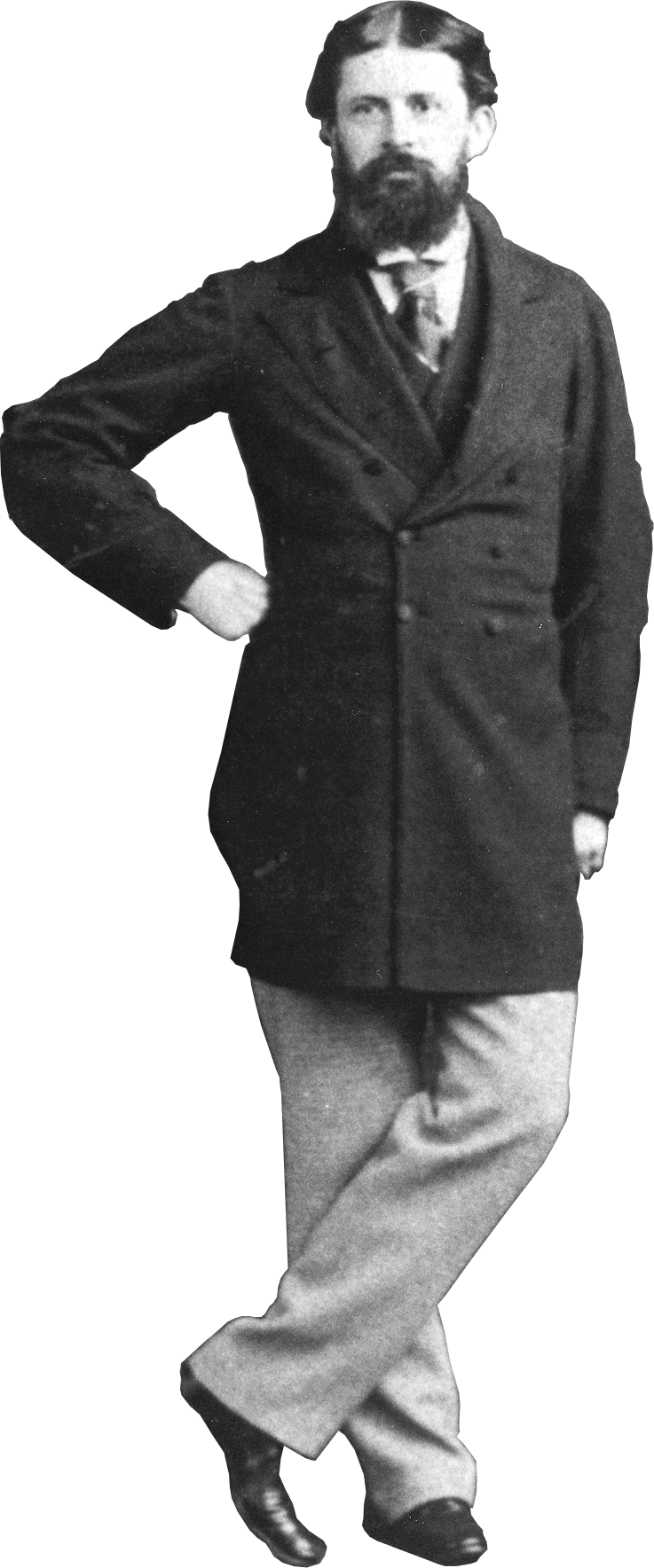
One way of assessing the significance of the thought of Charles Sanders Peirce is to consider the story of his papers and the ongoing effort to publish a substantial critically edited selection of them. After Peirce died in 1914, the bulk of his papers and library were shipped—first by horse-drawn sled and then by train—to Harvard University and were deposited in the office of Josiah Royce. In January 1915 Royce wrote to Wendell Bush, editor of the Journal of Philosophy, that he expected Peirce’s manuscripts to be “a real prize” and that he looked “forward to some arrangement for editing them.” But things did not turn out as Royce hoped. He died in 1916 and plans for a Peirce edition floundered.
For nearly ten years after Royce’s death, the Harvard philosophy department sought without success to find a suitable editor. Bertrand Russell was offered the job but could not get a visa. George Santayana was asked but he declined, suggesting that a young philosopher or mathematician might be found. C. I. Lewis began the task but after spending two years with the manuscripts decided he would rather teach and write. Many at Harvard “dipped into” the Peirce Papers to try what Royce’s assistant had described as a task burdened with “inconceivable textual confusion,” yet one that was “engrossing, wonderful and fascinating beyond belief.” Finally in 1923, Morris Cohen brought out a collection of Peirce’s published philosophical papers (Chance, Love, and Logic), but he gave up on the manuscripts. It was not until the late 1920s that Harvard found in Charles Hartshorne and Paul Weiss young editors who would commit to the daunting task.
The first six volumes of the Harvard edition, Collected Papers of Charles Sanders Peirce, edited topically by Hartshorne and Weiss, came out between 1931 and 1935. Two volumes, edited by Arthur Burks, came out in 1958 to complete that edition.
This was the culmination of a great effort on the part of the Harvard philosophy department and a landmark event for American philosophy. Yet the very success of the Harvard edition began almost at once to turn on itself, for the resurgent interest in Peirce’s thought brought with it a need for a more critical edition organized chronologically to reveal its development. But the disorganized state of the manuscripts from the time of their arrival at Harvard, coupled with an unfortunate period of neglect after the completion of the first six volumes of the Harvard edition, left the papers in a confused state that could be alleviated only by an intensive and long-term editing project.
In 1959, shortly after Burks’s volumes appeared, Max H. Fisch began work on an intellectual biography of Peirce. He soon realized that the selection and organization of the Collected Papers and the state of disorganization of the manuscripts made the systematic study of Peirce’s thought a nearly hopeless task. With the help of a number of colleagues and associates, including Carolyn Eisele, Don Roberts, Murray Murphey, and Richard Robin, Fisch began a reorganization effort that is only now nearing completion in the work-rooms of the Peirce Edition Project.
What was it about Charles Peirce that could motivate such a long-lived and against-the-odds effort to organize his manuscripts and edit his writings? It was respect for a mind unique in American intellectual history and of seminal import for modern thought. As early as 1879, it was reported in the British journal Mind that Peirce’s pragmatism promised to be “one of the most important of American contributions to philosophy.” That prediction, made by G. Stanley Hall less than a year after Peirce published his first paper on pragmatism, turned out to be remarkably prescient. Pragmatism has indeed become America’s great contribution to philosophy. The origin of the pragmatic movement was the classic school of American thought led by the Cambridge philosophers, Peirce, James, and Royce, and the great Chicago pragmatist, John Dewey. Peirce’s pragmatic thought, while a touchstone that motivated and guided the independently brilliant thought of the other original pragmatists, remains unique and has been assessed as the much-needed foundation for a new democratic liberalism (James Hoopes, Community Denied, Cornell University Press, 1998). As more and more scholars from around the world turn toward America for philosophical inspiration, Peirce is emerging as the central figure of our intellectual heritage. It is as important today as it was a century ago to look to Peirce’s subtle and sophisticated writings as a guide to both the richness and the pitfalls of pragmatism.
Peirce’s leadership in the pragmatic movement would by itself more than justify whatever attention has been given to his work, but he was much more than just a pragmatist. He was a career scientist who made notable contributions to geodesy and metrology. He was a linguist and lexicographer who contributed thousands of definitions to encyclopedias and dictionaries. He was a writer who contributed hundreds of reports and reviews to popular magazines and newspapers. He was a psychologist and a historian. And he was, in his own words, first and foremost a logician. He was, in fact, the man who introduced logic as a subject for research in America, and he was responsible for a great deal of “the shape” of logic today. As Colin McGinn has pointed out (The New Republic, 28 June 1993), Peirce anticipated more of the course of 20th-century philosophy than did Frege, and “he was onto the right things before almost anyone else.”
It is, then, the relevance and power of Peirce’s ideas that have kept alive Royce’s plans for a Peirce edition, and it is their continuing relevance and power that saw Fisch’s plans for a chronological edition through many challenging years. Peirce’s importance for current thought and culture has increased dramatically in the past decades as philosophy has turned away from a narrow analytical program and has begun to reconsider the richer and wider fields of intellectual experience that Peirce believed it was the purpose of philosophy to explore. The current focus on the importance of language (broadly construed) for thought, the rehabilitation of speculative metaphysics, the shift away from logicism in logic and a renewed interest in the theory of induction and even more so abduction, the growth of mainstream interest in the history of science—all in addition to the rebirth of pragmatism—have contributed to the current sense of the relevance of Peirce’s writings. In his 1989 Jefferson Lecture, Walker Percy announced that Peirce, with his pioneering theory of signs, “had laid the groundwork for a coherent science of [humankind],” a science that can bridge the dangerous rift between the “hard sciences” and the “human sciences.” This view is echoed by John Sheriff who says that Peirce’s semiotic philosophy, which emphasizes the importance of sentiment, is destined to have a revolutionary impact on the humanities (Charles Peirce’s Guess at the Riddle, Indiana, 1994).
“The proper maxim should be that ideas of universal and necessary significance and of a world of protean application may be taken one or two at a time as the subject of philosophical reflection; but that this reflection is of no use or meaning except so far as it is expressible in rules having reference to some conceivable practical upshot of all the thinking.”
“The only history of much interest is that of the human mind. Tales of great achievements are interesting, but belong to biography (which still remains in a prescientific stage) and do not make history, because they tell little of the general development of man and his creations.”
Charles Sanders Peirce was born on 10 September 1839 in Cambridge, Massachusetts—when Darwin was only 30 years old—and he lived until 1914, the year World War I began. His father, Benjamin Peirce, was a distinguished professor at Harvard College and the most respected mathematician in America. Benjamin was Harvard’s Perkins Professor of Astronomy and Mathematics for nearly forty years, was largely responsible for introducing mathematics as a subject for research in American institutions, as his son Charles would be for logic a generation or so later. Benjamin is known especially for his contributions to analytic mechanics and linear associative algebra, but he is also remembered for his early work in astronomy and for playing a role in the discovery of Neptune. He was a member of a small group of men, known as the Lazzaroni, who were largely responsible for the 19th century American institutionalization of science in such organizations as the American Association for the Advancement of Science, the National Academy of Science, the Smithsonian Institution, and the Lawrence Scientific School. Benjamin Peirce was widely recognized as the most powerful mind thus far produced in the United States.
Intellectually, Charles Peirce and his father had a lot in common. One curious statement to this effect comes from a letter from Thomas Davidson to William Torrey Harris. After listening to Charles give a lecture to the Harvard Philosophy Club on 21 May 1879, Davidson wrote to Harris: “Peirce’s paper was captious, bright, and poor. After it was over, I had a long talk with Prof. Ben. Peirce, who undertook to prove to me mathematically that space has four dimensions. The Peirce’s are all a little crazy, I think.”1 Just seven years later, Charles’s friend, Francis Ellingwood Abbot, made this entry in his diary:
Attended a meeting of “philosophers,” including John Fiske, James, Royce, and Perry, at Prof. J. M. Peirce’s, 4 Kirkland Place, to welcome Prof. Chas. S. Peirce, of Johns Hopkins, (my classmate), and hear from him a new “logical theory of Evolution.” Peirce begins with absolute or pure potentiality, with absolute chance or negation of all law, even logical, to evolve at last Absolute Being and Absolute Law—in fact, to evolve Infinity out of Zero, God out of Nothing. Brilliant, ingenious, and—impossible. Had a wine supper, during which Charley continued to spin his glistening cobweb.2
The Peirce family was well connected in academic and scientific circles, and Charles grew up on intimate terms with the leading figures. He was regarded as a prodigy both in science and philosophy, and more brilliant in mathematics than even his father. Although Peirce always thought of himself as a logician, his most sustained career was as a scientist for the Coast Survey. His career with the Survey began in 1859 when he worked as a field aid. He worked his way up in the Survey until 1872 when his father appointed him as Assistant, a rank just below that of Superintendent. Peirce’s primary field of scientific research was geodesy, and after 1872 he was put in charge of pendulum operations. The two main aims of Peirce’s geodetic work were to determine the force of gravity at various locations in the United States and abroad and, from these results, to determine the figure of the earth. Charles did more than anyone until perhaps the 1920s or 1930s to integrate the geodetic work of the United States with the work of other nations, especially England, France, and Germany. According to John W. Servos, Charles Peirce was one of a very small group of scientific men in America who were capable of contributing to sciences that were laden with mathematical theory.3 Other men in this group, mainly mathematical astronomers, included Simon Newcomb, Asaph Hall, and George William Hill. All of these men were students of Benjamin Peirce.
Peirce’s independence of mind, which was at first much admired, turned out to be a severe impediment to his success. In part this was due to the times. For, as James Feibleman has pointed out, with the expansion of the United States and the rise of the great western cities, New England, and especially Boston and Cambridge, became more and more insular and conservative and grew fearful of genius and originality.4 As great a thinker as any that America has ever produced, Peirce was thwarted at almost every turn, and only by great effort of will was he able to fulfill some of the promise he exhibited as a young man.
Peirce’s importance as a thinker was not entirely lost on his own age. Among his friends and admirers were many respected scientists, mathematicians, and philosophers, including such figures as Wolcott Gibbs and Samuel Langley, Ernst Schröder, and William James. Yet because of a number of misfortunes and misjudgments, Peirce’s influence rose and fell rapidly and was carried forward only because of the resolve of his friends and followers to carry on what they took to be the work of a great mind.
Peirce is not an easy man to depict. He was a man of great complexity of character, and his life seems to have been enveloped in a rather mysterious quality. Probably the most difficult problem for a biographer is Peirce’s truly polymathic scope: in addition to several branches of philosophy, including phenomenology and the philosophy of science, Peirce contributed extensively to semiotics, to mathematics and logic, to several exact sciences including geodesy, metrology, and astronomy, and he also contributed to psychology, to lexicology, and to operations analysis. Peirce’s breadth of curiosity and competence, coupled with the novelty of his ideas, raises a considerable barrier for anyone foolhardy enough to attempt an assessment of Peirce. The problem was understated by Alfred North Whitehead:
Peirce was a very great man, with a variety of interests in each of which he made original contributions. The essence of his thought was originality in every subject that he taught. For this reason, none of the conventional labels apply to him. He conceived every topic in his own original way.5
There were perhaps two high points in Peirce’s career. The first came in the 1870s when Peirce’s work in geodesy brought him world-renown and raised the stature of the U.S. Coast Survey to position of respectability in international scientific circles. During the 1870s and early 1880s Peirce made five extended trips to Europe, primarily to connect European results with his work at initial stations throughout the U.S. (at such sites as Washington D.C.—where Peirce had a station at the Smithsonian—, Pittsburgh, Ann Arbor, Madison, and Ithaca—and numerous north/south stations from Montreal to Florida).
The second high-period in Peirce’s life came during the years of his appointment as a lecturer in Logic at Johns Hopkins (from 1879 to 1884). Although Peirce’s official connection with Johns Hopkins was with the Philosophy Department, he quickly became a member of the mathematical community which included James Joseph Sylvester, for a time Arthur Cayley, and such brilliant young instructors and students as George B. Halsted, William E. Story, Christine Ladd, Fabian Franklin, Allan Marquand, and Oscar Howard Mitchell. During this period Peirce was standardly regarded as one of the world’s great logicians. When in 1922 Jan Lukasiewicz delivered his address as rector of Warsaw University, he included Peirce, along with Leibniz, Boole, Frege, Russell, and himself, in the “still tiny group of philosophers and mathematicians who have chosen mathematical logic as the subject or the basis of their investigations.”6 It was also at Johns Hopkins that Peirce conducted some early experiments in psychology that have led some to regard him as America’s first experimental psychologist.
Unfortunately, the great promise of these high times in Peirce’s life was soon to fail. In 1884, due to a scandal-fearing board of trustees at Johns Hopkins, after it was reported by Simon Newcomb that Peirce had openly consorted with a Frenchwoman while still married to his estranged wife, his contract was not renewed and he was forced to leave academia. Not long afterwards, a new administration in Washington, fed up with the cost of pure scientific research, decided to “clean house.” Various scandals resulted from the ensuing investigations, and one of the more serious ones greatly damaged the Coast Survey. Peirce was one of the higher echelon figures to survive with his reputation intact, but the economization that followed made Peirce’s high-standards for geodesy outdated, and made U.S. geodesy secondary to European work for several decades. Peirce’s obstinacy, for example, his refusal to use 1/4 meter pendulums for what was supposed to be precision gravity determinations, led to the loss of his leadership in the geodetic work of the Survey, so in early 1887 Peirce and his second wife, Juliette (the Frenchwoman), moved to Arisbe, a country home in Milford, PA, where he worked for two or three more years to complete a major report on his 1880 gravity determinations. When he finally completed his report it was rejected for publication, for reasons that now appear to be suspect. In fact, for many years, the report remained lost, until sometime in the 1950s or 60s when it was finally discovered in an obscure place in the National Archives.
Victor Lenzen has studied this report and claims that it would have been a major contribution to geodesy if it had been published when it should have been. But, as it happened, the rejection of the paper led to Peirce’s dismissal from the Survey, and Peirce was left without any regular income. Peirce was unable to obtain regular employment again, and spent much of the latter third of his life struggling to make ends meet, and many of his writings of those years were done for pay. These include book reviews for newspapers and popular journals (hundreds for the Nation), contributions to dictionaries and encyclopedias, and translations (mainly from French and German, and most for the Smithsonian).
During these Arisbe years, there were also a number of articles composed to satisfy the expectations and instructions of paying editors. For a period, beginning about 1890, Peirce’s life was often dominated by one unsuccessful “get rich” scheme after another.7 He perfected and patented a bleaching process, from which he hoped to acquire wealth, but to no avail—apparently someone swindled him out of his rights. He also developed a process for extracting acetylene, which he and his business friends thought would become the main source for lighting. But Edison’s electric light ended that venture. Peirce also did contract work as a structural engineer. He made the stress calculations for a New York engineering firm working on suspension bridges. He also worked at other odd jobs which required the scholarly abilities he possessed. He was an advisor to the New York Public library for several years, advising them on their science and mathematics collections. He also worked as an advisor and sometimes buyer for Plimpton, whose collection of mathematical books was to become a classic resource in the history of mathematics. By the turn of the century, Peirce had come to regard himself as a failure as far as career aspirations went, and he began to worry about getting his program of philosophy and his discoveries in mathematics and logic into print. As it turned out, he was right to worry, for most of his attempts failed either for lack of support or because he could not take time from his hack-writing to bring them to completion. The Peirce collection is filled with unfinished, although sometimes extensive, studies.
Peirce died in 1914, a nearly forgotten man. His dream of having his work become the focus of serious theoretical research was slow in being fulfilled. It was more than twenty years after his death, and only after the Harvard Philosophy Department brought out a collection of his papers, that scholars began more generally to glimpse the importance and profundity of Peirce’s thought. By 1936 Alfred North Whitehead would describe America as the developing center of worthwhile philosophy, and identify Charles Peirce and William James as the founders of the American renaissance. “Of these men,” Whitehead said, “W.J. is the analogue to Plato, and C.P. to Aristotle.”8
Interest in Peirce has grown enormously in recent years, and estimates of his significance as a thinker continue to run high. His work in logic, algebraical and graphical, has come to be regarded as substantial both for its historical impact and its enduring importance for research. Hilary Putnam expressed his surprise upon discovering “how much that is quite familiar in modern logic actually became known to the logical world through the efforts of Peirce and his students,”9 and W. V. Quine dates modern logic from “the emergence of general quantification theory at the hands of Frege and Peirce.”10 John Sowa has demonstrated how Peirce’s graphical system of logic (his existential graphs) improves on other logics for the representation of discourse, and the study of language generally, and he has used the existential graphs as the logical foundation for his own conceptual graphs, “which combine Peirce’s logic with research on semantic networks in artificial intelligence and computational linguistics.”11 In philosophy more generally, Peirce’s work has been the focus of a considerable resurgence of interest throughout the world. This is demonstrated by the growing number of books, articles, websites, and web-pages about Peirce, by increasing references to his ideas, and by the testimony of respected philosophers like Karl Popper, who regards Peirce as “one of the greatest philosophers of all time.”12 Finally, in the rapidly growing field of study known as semiotics, Peirce is universally acknowledged as one of the founders, even the founder, and his theory of signs is among the most frequently studied and systematically examined of all foundational theories. The importance of semiotics for all disciplines that deal crucially with representation (among them epistemology, linguistics, anthropology, and cognitive science, and probably all the fine arts) is now well recognized. In his 1989 Jefferson Lecture, Walker Percy argued that modern science is radically incoherent—“not when it seeks to understand things and subhuman organisms and the cosmos itself, but when it seeks to understand man, not man’s physiology or neurology or his bloodstream, but man qua man, man when he is peculiarly human”—but that, with his theory of signs, Peirce laid the groundwork for a coherent science of man that is yet to be worked out.13
(Extracted from papers by Nathan Houser, including the introduction to EP1.)
As transcribed by Max Fisch from transcripts made by Albert Lataner (a scholar who researched Davidson’s life in the 1960s) of letters from Thomas Davidson to William T. Harris.
As transcribed by Max Fisch on a typewritten slip. May have been printed in If Ever Two Were One: A Private Diary of Love Eternal by Francis Ellingwood Abbot, ed. by Brian A. Sullivan (New York: Regan Books, 2004).
John W. Servos, “Mathematics and the Physical Sciences in America,1880–1930,” Isis 77 (1986): 611–29, p. 612.
James Feibleman, “The Relation of Peirce to New England Culture,” American Journal of Economics and Sociology 4 (1944): 99-107.
Alfred North Whitehead to Frederic H. Young, in Philip P. Wiener & Frederic H. Young, eds., Studies in the Philosophy of Charles Sanders Peirce (Cambridge, MA: Harvard University Press, 1952), chapter 21, p. 276.
Jan Łukasiewicz, “On Determinism,” 1946 revision of 1922 address, first published in Polish in 1961, translated by Z. Jordan; Polish Logic 1920–1939, ed. Storrs McCall (Oxford University Press, 1967), p. 20.
For an account of some of these “get rich schemes,” see Christian J. W. Kloesel, “Charles Peirce and Honoré de Clairefont,” Versus 49 (1988): 5-18.
Whitehead to Charles Hartshorne, 2 Jan. 1936, in George L. Kline, ed., Alfred North Whitehead, Essays on His Philosophy [Prentice Hall, 1963; Lanham, MD: University Press of America, 1989], p. 198); also in Victor Lowe, Alfred North Whitehead: The Man and His Work, ed. J. B. Schneewind (Baltimore: Johns Hopkins University Press, 1990), vol. 2, p. 345.
Hilary Putnam, “Peirce the Logician,” Historia Mathematica 9 (1982): 295.
W. V. Quine, “In the Logical Vestibule,” Times Literary Supplement, 12 July 1985, p. 767.
John Sowa, “Matching Logical Structure to Linguistic Structure,” in Studies in the Logic of Charles S. Peirce (Bloomington: Indiana University Press, 1992).
Quoted by James Bird, “A Giant's Voice from the Past,” Times Higher Education Supplement, 8 Sept. 1989.
Walker Percy, “The Fateful Rift: The San Andreas Fault in the Modern Mind,” 18th Jefferson Lecture in the Humanities, delivered 3 May 1989 in Washington D. C.
For fuller accounts of Peirce’s life see Joseph Brent, Charles Sanders Peirce: A Life (Indiana University Press, 1993; revised ed. 1998); and Kenneth Laine Ketner, His Glassy Essence: An Autobiography of Charles Sanders Peirce (Vanderbilt University Press , 1998). Also see Max H. Fisch, Peirce Semiotic and Pragmatism (Indiana University Press, 1986). For a short account of Peirce’s intellectual development see the introduction to The Essential Peirce, vol. 1.
“That the contemplation of the lives and characters of great men is a salutary and invigorating spiritual exercise has always been admitted and often proved. But it is so only on condition that the heroes are apprehended in all their living reality and passion.”
“A chronology of Sylvester’s changes of place, travels, and, if possible, of his forming of mathematical acquaintances, would be of advantage.”
Born in a house on Mason Street, Cambridge, MA, to Benjamin and Sarah Hunt (Mills) Peirce, 10 Sept.
Goes to church for the first time, 31 July
Moves to new house Harvard had built for his father on Quincy Street (“Function Hall”)
Works his way through Liebig’s method of chemical analysis
Moves to Boston to live with uncle Charles Henry Davis and attend Rev. Thomas Russell Sullivan’s private school, where he is taught elocution
Admitted to Cambridge High School
Writes “A History of Chemistry”
Reads Whately’s Elements of Logic
Graduates from Cambridge High School with memorable performance of Poe’s “The Raven,” 6 Aug.
Studies mathematics for six months under his father’s guidance
Attends Epes Dixwell’s Preparatory School, and then enters Harvard College
Studies Schiller’s Aesthetic Letters with friend Horatio Paine and begins study of Kant
Begins conceiving the I–IT-THOU triad as a set of fundamental impulses, faculties, or metaphysical conceptions following his reading of Schiller
First publication: “Think Again!” Harvard Magazine, April
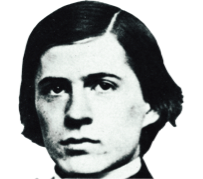 1859
1859Graduates (A.B.) from Harvard; continues as a “resident graduate” for one year.
Reports sessions of American Association for the Advancement of Science for Boston Daily Evening Traveler, August
Temporary aide in U.S. Coast Survey, 21 Sep. to 1 June ’60; goes to Maine (in the hills above Machias, summer) and then Louisiana (chiefly at sea around Mississippi delta, winter–spring)
Begins drafting a treatise on the nature of metaphysics defined in terms of the analysis of conceptions (until mid 1862)
Proctorship at Harvard; studies natural history, natural philosophy, and classification with Agassiz, summer–fall
Conducts research in metaphysics and begins two-year study and expansion of tables of Kantian categories
Enters Lawrence Scientific School at Harvard
Appointed regular aide in Coast Survey, 1 July (until 1 Aug. ’64)
Composes the final (incomplete) version of his treatise on metaphysics, 21 Aug.–June ’62
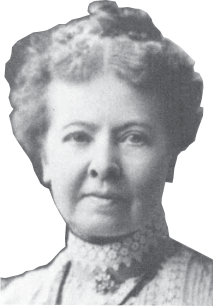 1862
1862Receives graduate degree (A.M.) from Harvard
Marries Harriet Melusina Fay, 16 Oct.
First professional publication: “The Chemical Theory of Interpenetration,” Jan.
Graduates summa cum laude (Sc.B.) in Chemistry from Lawrence Scientific School
Delivers oration on “The Place of Our Age in the History of Civilization” at Cambridge High School Association, 12 Nov.
Begins search for a new method of investigating logical categories; discovers Boolian logic; devises algebraical and graphical representations of syllogistic moods and figures, including quantified predicates
Appointed Computer in Coast Survey, 1 Aug. (till 1 Jul. ’67)
Delivers eleven Harvard lectures on “The Logic of Science,” 24 Mar.–2 June
Begins Logic Notebook, 12 Nov.; last entry in Nov. ’09
Delivers twelve Lowell Institute lectures on “The Logic of Science; or Induction and Hypothesis” where his “Memoranda Concerning the Aristotelean Syllogism” gets distributed, 24 Oct. – 1 Dec.
 1867
1867Elected to American Academy of Arts and Sciences (AAAS), 30 Jan., where he presents five papers on logic throughout the year, including the ground-breaking and epoch-making “On a New List of Categories” on 14 May
Promoted to rank of Assistant in the Coast Survey, 1 July
Writes three anti-Cartesian papers for the Journal of Speculative Philosophy, thus setting a new semiotic platform for philosophy
Writes first of about 300 Nation reviews, in Mar.; last in Dec. ’08
Assistant at Harvard Observatory, Oct.’69 – Dec. ’72
Delivers Harvard lectures on “British Logicians,” Dec.-Jan. ’70
 1870
1870Submits epochal paper “On the Extension of Boole’s System to the Logic of Relations” (subsequently retitled) to the American Academy of Arts and Sciences, 26 Jan. (first printing, June; published ’73)
First Coast Survey assignment in Europe: 18 June ’70 – 7 Mar. ’71
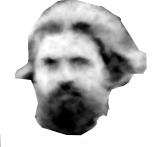 1871
1871Founding member of Cambridge Metaphysical Club in spring, or in Jan. ’72
Publishes remarkable review of Fraser’s The Works of George Berkeley with discussion of distinction between nominalism and realism, Oct.
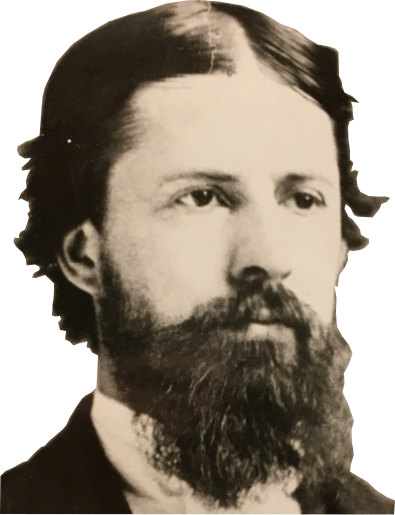 1872
1872Composes his first Logic Book, Feb.–July ’73
In charge of Survey office, spring-summer
Writes essay “On the Theory of Errors of Observations,” summer (publ. ’73)
Begins photometric researches (through ’75)
New Coast Survey assignment: in charge of pendulum experiments, 1 Dec.
Resigns from Harvard Observatory, 2 Dec.
Elected to the Philosophical Society of Washington (PSW), 1 Mar.
Presents paper on logical algebra, PSW, 17 May
Gravity observations conducted in North Adams, MA, on Hoosac Mountain, in Hoosac Tunnel, and other locations in Massachusetts (through ’74)
Presents paper on quaternions based on logic of relatives, PSW, 3 Jan.
Presents paper on various hypotheses in reference to space, PSW, 14 Mar.
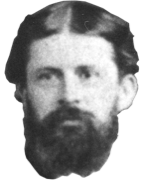 1875
1875Second Coast Survey assignment in Europe, Apr. ’75 – Aug. ’76
Serves as first official American delegate to International Geodetic Association in Paris, 20 – 29 Sept.
“Logical Contraposition and Conversion” published in Mind, July
Presents paper at AAAS on new edition of Ptolemy’s Catalogue of Stars, 11 Oct.
Separates from Melusina in Oct.
Elected to National Academy of Sciences, 20 Apr.
Death of Nicholas St. John Green, 8 Sep.
Third Coast Survey assignment in Europe, 13 Sept. – 18 Nov.
Represents U.S. at International Geodetic Association conference in Stuttgart, 27 Sept. – 2 Oct.
Begins publication of the five celebrated Popular Science Monthly articles constituting the “Illustrations of the Logic of Science” series (Nov.–Aug. ’78)
Photometric Researches published in Aug.
Submits major report on “Measurements of Gravity at Initial stations in America and Europe,” 13 Dec. (publ. 1879)
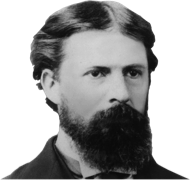 1879
1879Lecturer in logic at Johns Hopkins University until 1884
Responsible for pendulum observations in New Jersey and Pennsylvania (till ’80)
Conducts spectroscopic studies, spring
Presents paper on the reference of the unit of length to the wave-lengths of light at AAAS, 11 June
Works out algebraical principles of logic, fall
Publishes his “Quincuncial Projection of the Sphere”
First meeting of Johns Hopkins Metaphysical Club, 28 Oct.
Elected to London Mathematical Society, 11 Mar.
Trains members of the Lady Franklin Bay Expedition on the use of Peirce Pendulum No. 1 prior to their June departure for the Arctic
Fourth Coast Survey assignment in Europe, Apr.-Aug.
Addresses French Academy on value of gravity, 14 June
Designs and supervises the construction of the first of four gravity pendulums bearing his name
Publishes major paper “On the Algebra of Logic,” summer
Death of Peirce’s father, Benjamin, 6 Oct.
Works out the first axiomatization of natural numbers and publishes “On the Logic of Number,” summer
Elected to American Association for the Advancement of Science in Aug.
Compares metre with wave-length of light, fall–summer ’82
Continues study of algebra of relatives, ultimately coming up with a two-dimensional system of representation, spring–winter
Coast Survey conference on gravity determinations, 13 May
Gravity observations in Cambridge, MA, Baltimore, MD, and Washington, DC
Studies in Logic published in spring, including essay on “A Theory of Probable Inference”
Determination of force of gravity at Montreal, Albany, and Hoboken
Divorces Melusina, 24 Apr.
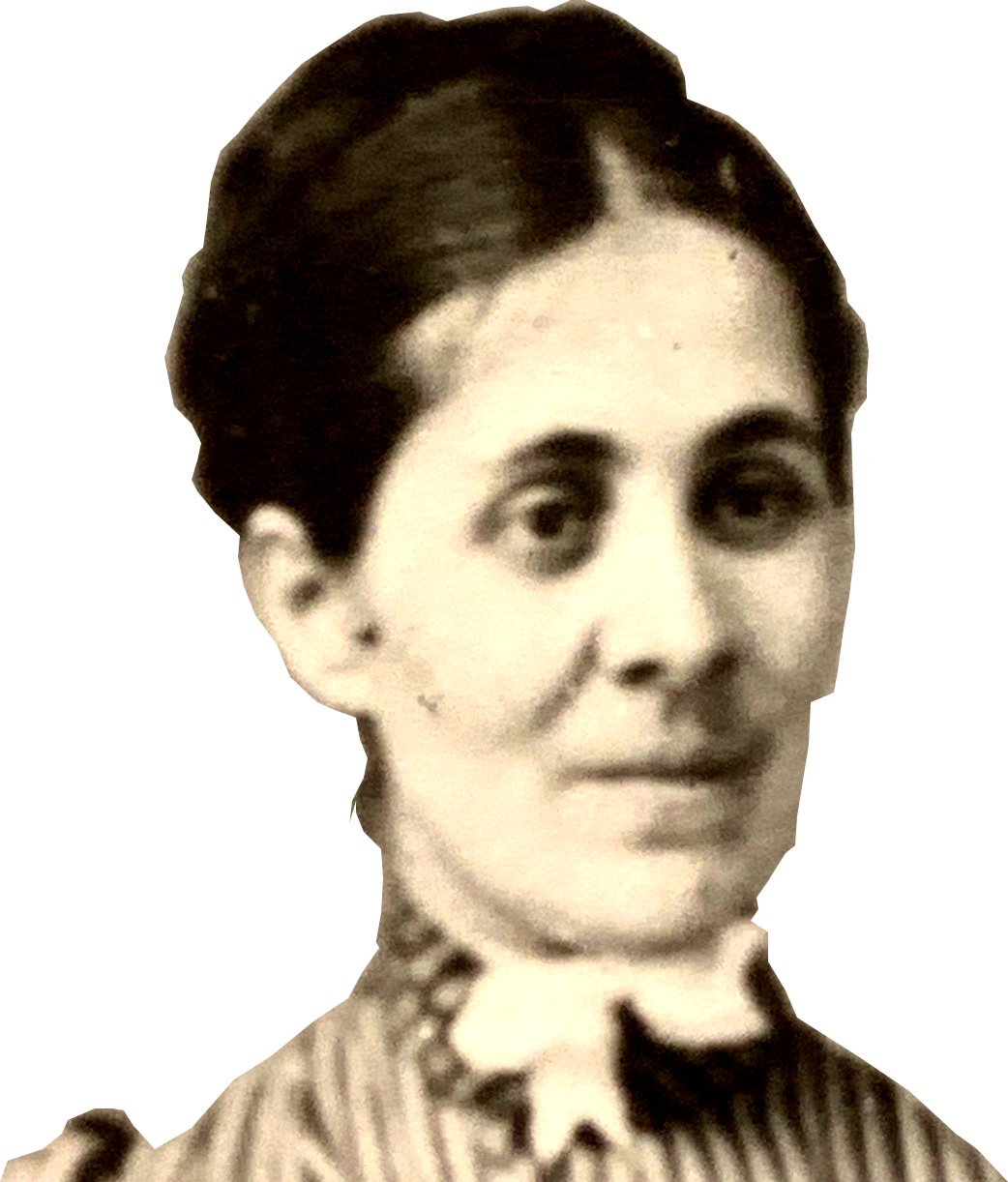
Marries Juliette Froissy (Pourtalais), 26 Apr.
Fifth and final Coast Survey assignment in Europe, May – Sept.
Major study “On the flexure of Pendulum Supports” published, fall
Study of great men, fall ’83 to fall ’84
Begins extensive lexicographical work on about 15,000 definitions for Century Dictionary (published 1889‐91)
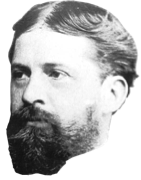 1884
1884Gives talk on Design and Chance at JHU Metaphysical Club, 17 Jan.
Lt Greely and survivors of the Lady Franklin Bay Expedition bring out the raw data for Peirce’s report on Arctic gravity measurements in June
Forced to resign from Johns Hopkins; moves to Washington, D.C. in Sept.
“On Small Differences of Sensation” co-authored with Jastrow, presented at NAS, 17 Oct.
In charge of U.S. Office of Weights and Measures, Oct. ’84 – 22 Feb. ’85
Directs pendulum operations to determine relative gravity at Washington, D.C. and various field sites (Fortress Monroe, Key West, FL, Ithaca, NY, Hoboken, NJ, Ann Arbor, MI, Madison, WI), Jul. ’84 – Feb. ’86
Testifies in U.S. Senate on Office of Weights and Measures operations, 24 Jan.
Publishes “On the Algebra of Logic: A Contribution to the Philosophy of Notation” and continues studies in logical algebra, spring
Reviews Royce’s Religious Aspect of Philosophy, late June
Expands his study of categories from thought to nature and turns them into the “highly primitive conceptions” of First, Second, and Third, summer–fall (study continued in 1886)
Moves from Washington, D.C. to New York City, Mar.
Conducts operations at Stevens Institute, Hoboken, summer
Relieved of field operations for the Coast Survey, 15 Aug.
Begins reports on his gravity field work
Writes chapters of a book on Qualitative Logic and studies logic of relatives using streamer notation, fall-winter
Receives first inquiries about his correspondence course in logic, Jan.
Begins 5 years of reduction and discussion of pendulum observations for the Coast Survey (till end of ’91)
Submits, under pressure, his report on General Greely’s pendulum work at Fort Conger, 11 Apr.
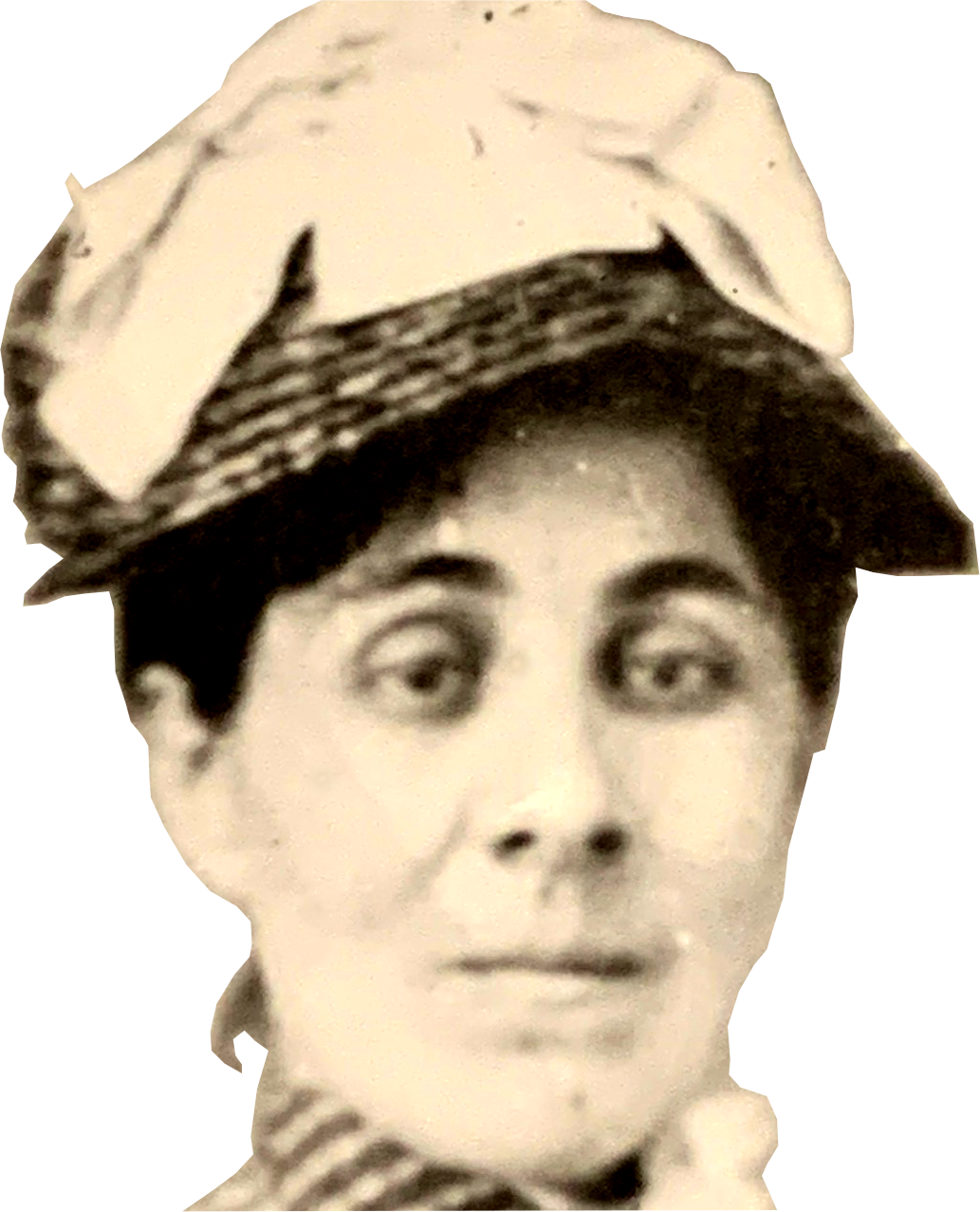
Moves with Juliette to Milford, Penn. 28 Apr.; by May 11 rents a house (in town) for the summer
Finishes first paper after moving to Milford, “Criticism on Phantasms of the Living,” 14 May. Published in Dec.
Death of Peirce’s mother, Sarah Mills, 10 Oct.
Turns “One, Two, Three” (1885-86) into “A Guess at the Riddle” (till early spring ’88)
Appointed by President Cleveland to U.S. Assay Commission, 1 Jan.
Death of Charlotte Elizabeth Peirce, his aunt, 4 Feb.
Rents Scheinmee Homestead on Broad Street, Milford, 28 Apr.
Assigns a clerk, Allan Risteen, for Coast Survey work
Risteen and wife stay with Peirces in Milford, Apr. – Jul.
Purchases with Juliette the Quick farm about two miles northeast of Milford, 10 May
Start of publication of first edition of Century Dictionary; continues till 1891
Starts renovations on Quick farmhouse, Jan.
O. H. Mitchell, 37, died of pneumonia at Marietta, 29 Mar.
Juliette diagnosed with tuberculosis in May
Thomas Corwin Mendenhall succeeds Thorn as superintendent of the Coast Survey, 9 Jul.
Submits report on gravity at Smithsonian, Ann Arbor, Madison, and Cornell, 20 Nov. Never published
Juliette travels to Mediterranean for her health, Nov. 27 – spring ’90
Resides in New York, drawing up list of mathematical works for the Astor Library, until Juliette returned from the Mediterranean in June
Ernst Schröder resumes correspondence with Peirce, 1 Feb.
Completes major addition to Arisbe, Apr.
Helps organize the New York Times debate on Spencer; contributes under the name “Outsider,” 23 Mar. – 27 Apr.
Invited by Paul Carus to write article for inaugural issue of the Monist, 2 Jul.; submits “The Architecture of Theories,” 3 Aug. (too late for the first issue), launching one of his most important publishing relationships
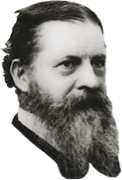 1891
1891“The Architecture of Theories” (first article of the Monist metaphysical series) published, 1 Jan.
Juliette undergoes surgery for gynecological problems in Jan.
Publication of Ernst Schröder’s Vorlesungen über die Algebra der Logik, which contains an extensive discussion of Peirce’s logic
The Peirces name their estate Arisbe, March
In Sep., after receiving no further work from Peirce on gravity determinations, Superintendent Mendenhall asks for Peirce’s resignation from Coast and Geodetic Survey
First printing of Century Dictionary completed, fall
Attends New York Mathematical Society meeting at Columbia and is elected to its membership, 7 Nov.
Abbot–Royce affair begins with Peirce’s letter to the editor of The Nation, 12 Nov.
Resigns from Coast and Geodetic Survey, 31 Dec.
“The Doctrine of Necessity Examined” published, 1 Apr.
Has a religious experience at St. Thomas’s Episcopal Church, 24 April
Reads “Law of Mind” to the Harvard Philosophical Club, 21 May
Assists with the translation of Ernst Mach’s Science of Mechanics for the Open Court, July ’92 – May ’93
“The Law of Mind” published, 1 July
“Man’s Glassy Essence” published, 1 Oct.
Delivers Lowell lectures on “The History of Science,” 28 Nov. ’92 – 5 Jan. ’93
“Evolutionary Love” published, 1 Jan.
Meeting with Edward C. Hegeler and Paul Carus in La Salle, IL, with agreement struck on production of “A Quest for a Method” and an Arithmetic school book, 28 Jan.–6 Feb. (none completed)
Meeting with Francis C. Russell in Chicago, 7 Feb.
“Reply to the Necessitarians” submitted to the Monist, 13 Feb., published 1 July
Peirce’s last article for the Open Court, “What is the Christian Faith?,” submitted early May, published 27 July
Designs the earliest known instance of a truth table device displaying the definition of illation
Petrus Peregrinus announced; prospectus published, Oct. “Search for a Method” announced by Open Court (not completed)
“The Principles of Philosophy” (in 12 vols.) announced by Henry Holt Co., Dec. and subscribed to by many (no volume completed)
“How to Reason” rejected by both Macmillan and Ginn & Co.
“New Elements of Mathematics” rejected by Ginn & Co.
Consulting chemical engineer (till ’02), St. Lawrence Power Co.
Reviews Ernst Schröder’s works on logic of relatives
William James publishes The Will to Believe and dedicates it to Peirce. The ensuing correspondence brings Peirce to confess misery and James to promise to bring Peirce to Cambridge the following year. Peirce begins composing lectures on “The Logic of Events”; James begs him to address “separate topics of a vitally important character” instead, setting off a period of philosophical sarcasm
Delivers Cambridge Conferences lectures on “Reasoning and the Logic of Things,” 10 Feb. – 7 Mar.
“The History of Science” announced by Putnam’s (not completed)
William James introduces “Pragmatism” to Berkeley Philosophical Union, naming Peirce its father, 26 Aug.
Peirce’s first printed occurrence of the word “pragmatism” in Science article he wrote on the occasion of Clark University’s decennial celebration (20 April)
Begins contributing to Baldwin’s Dictionary of Philosophy and Psychology
Presents “On the Logic of Research into Ancient History” to National Academy of Sciences, 12-14 Nov.
Completes the first four chapters of “Minute Logic” (in ’02)
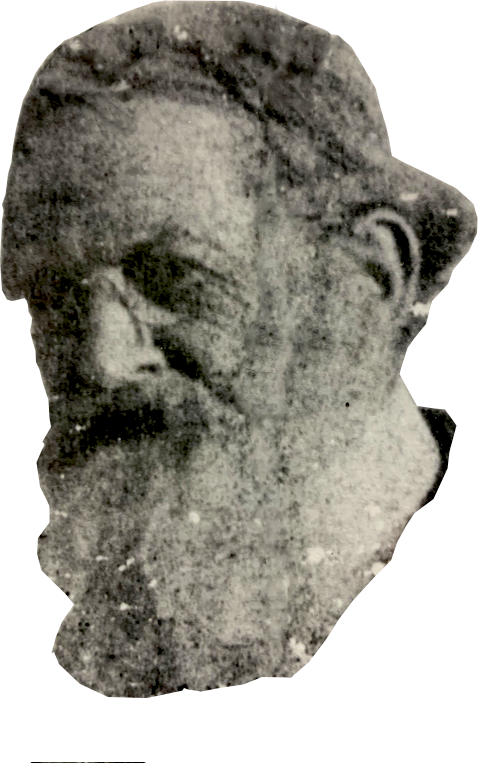 1902
1902Applies to Carnegie Institution for grant to fund “Proposed Memoirs on Minute Logic” (rejected)
Delivers Harvard lectures on “Pragmatism,” 26 Mar. - 17 May
Delivers Lowell lectures on “Some Topics of Logic,” 23 Nov. – 17 Dec.
Begins correspondence with Victoria Lady Welby
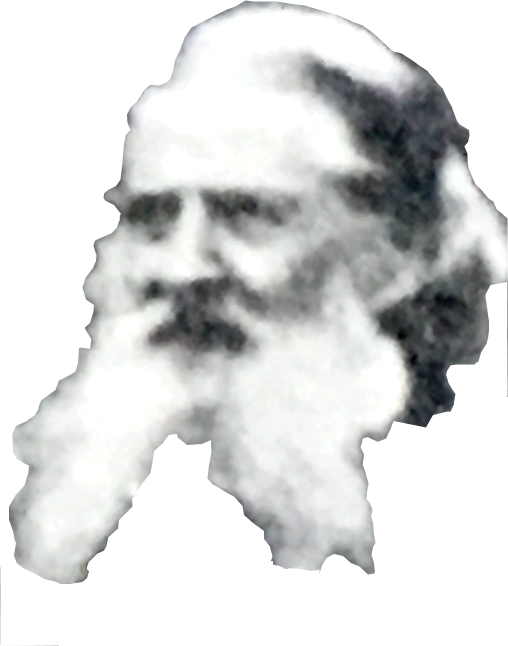 1905
1905Publishes three Monist papers on pragmatism through ’06 (series incomplete)
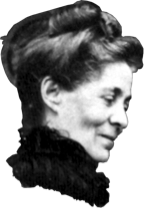 1906
1906Presents paper on existential graphs to National Academy of Sciences, Apr.
Presents paper on phaneroscopy to National Academy of Sciences, Nov.
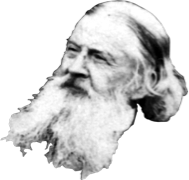 1907
1907Delivers three Harvard Philosophy Club lectures on “Logical Methodeutic,” 8 – 13 Apr.
Writes several versions of a masterpiece “letter to the editor” on pragmatism (especially R 318); rejected by both the Nation and Atlantic Monthly
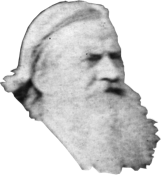 1908
1908Publishes “A Neglected Argument for the Reality of God,” Hibbert Journal, Oct.
Publishes Monist series on “Amazing Mazes”
Originates a matrix method for three-valued logic recorded in his Logic Notebook (R 339), 23 Feb.
Writes “A Sketch of Logical Critics” for volume to honor Lady Welby (not completed)
Last public presentation: “The Reasons of Reasoning, or Grounds of Inferring” at meeting of National Academy of Sciences, 21-22 Nov.
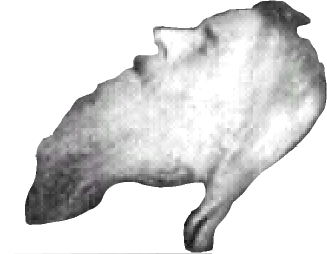 1914
1914Dies of cancer at Arisbe, 19 April
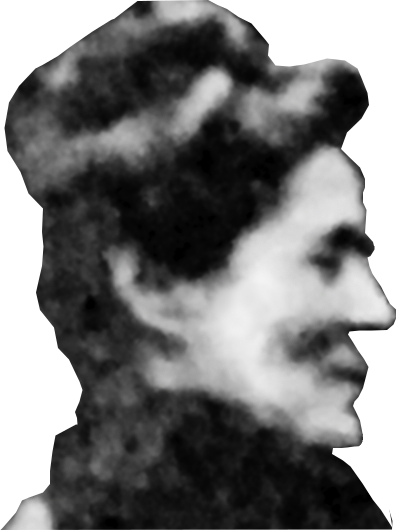 1934
1934 dies at Arisbe, 4 October
dies at Arisbe, 4 October“An ancient alliance exists between the two sciences of ancient history and astronomy through chronology.”
Charles Peirce was a phenomenal researcher. In order to appreciate and really grasp the magnitude and depth of his achievements, it is critical to understand not only what he said, but also how he came to say it, following what method, what research process, what discipline of reasoning he did employ before allowing himself to write down the more definite state, or stage, of his findings and conclusions. Surveying the relatively chaotic organization of his manuscripts, one might wonder whether he was at all methodical. It appears that if there was any sort of chaos in Peirce’s Arisbe study, it must have paradoxically resulted from Peirce’s own extreme brand of methodicalness. One cannot understand Peirce’s prodigious output without keeping in mind the astounding methodology that governed its making. Peirce’s heuristic habits were nothing but minute and thorough. After all, he devoted his life to the study of logic, a science whose “true and worthy idea” he defined as early as 1882 as “the art of devising methods of research,—the method of methods” (W4: 378). In order to turn philosophy into a research enterprise as rigorous as is typical of other sciences, Peirce needed to subject, not only the methods of philosophy, but “the elementary ideas which are to enter into those methods, to careful examination” (W9: 351, 1893). What kind of careful examination?
Peirce answered that question in different places, but nowhere more eloquently than in the first (ten-page long) section of MS 312, the notebook that contained the text of his fifth Harvard Lecture on “The Three Normative Sciences” (30 April 1903). This is not a section Peirce actually read aloud at the lecture: he skipped it, substituting for it a sharply condensed version at the end of that lecture. It is well worth reading in extenso (it was reproduced as an annotation in EP2: 525–27). It is to be noted that Peirce’s methodology cannot itself be appreciated without also studying his recommendations on how to train oneself intensively in the three operations of reasoning (observation, experimentation, and habituation) as described in the fifth Cambridge Conferences Lecture titled “Training in Reasoning” (24 Feb.1898, RLT 181–96). The paragraphing of the text below bas been altered for easier online reading.
Ladies and Gentlemen:
You may perhaps gain some useful hints if I describe to you how I go to work in studying philosophy. I shall merely sketch the outline of the proceeding without going into details. I mostly work pen in hand and although important steps are taken while I am away from my writing-table, they are recorded at once.
A given question in philosophy comes up for discussion, never mind how. I begin by writing out a Collation upon it. That is, I begin by setting down briefly yet sufficiently and as formally as possible all the arguments which I have seen used on the one side or which seem to me likely to be used on that side; and then I do the same for the other side. Such of the arguments as admit of ready refutation, I at once set down the refutations of.
Next, without going into the merits of the case, I draw up a list of the general methods in which a solution of the problem might be sought. If some of them appear to be quite futile, I draw up brief formal statements of the reasons of this futility. One of the methods will appear to me to be the one which ought to be decisive, and I carefully set down the reason why, keeping a good look out for special circumstances which might annul this reason. Other methods may appear to me to have a secondary utility and I further set down the reasons for this and for my estimate of just how far and where those methods are valuable. Search is made for objections to all these reasons, and any that seem considerable are formally set down and refuted. But if, in this course of this part of the discussion or at a later stage, it appears that the question in hand depends upon another which I have never submitted to any systematic examination or concerning which, since my last examination of it, any considerable grounds of doubt have been found, I put aside the first examination until this other question shall have been at least provisionally settled in my mind. If no such interruption takes place, I take up first the principal method and afterwards the subsidiary or secondary methods and apply them with the severest critical scrutiny of which I am master, setting down always brief and formal but sufficient statements of all the steps of the argumentation, and disposing of all objections either by assent or refutation. I also dispose, in the same way, of all the arguments which have not already been disposed of.
Having this brief drawn up I study it with the minutest care to detect any loopholes, and sometimes amend it more or less radically, even giving the question itself a new and broader turn, and this is sometimes done three or four times over, before I am satisfied with the discussion.
I then put the paper away and dismiss the matter from my mind. Sometimes I do so in despair of being able at the time to obtain any clear light on the subject; for when such light is not at hand my experience is that hard thinking is of very little use. There is nothing to be done but wait until the light comes from some other source. But even when my discussion does seem satisfactory at first, yet my experience of my own stupidity is such that I always mutter to my intellect, “Very well, you have only to possess yourself in patience and the inadequacy of your present ideas will appear plainly enough in due time.” In fact, after a long time, something or other flashes a new light on the old question, and only too often I find that strenuous as was my scrutiny of the previous arguments, I have committed some horrible stupidity.
At last, my ideas seem ripe for a new setting of them in order; and I make a second collation of the question without looking at the first but endeavoring to proceed quite as if the question were a new one. This second collation is drawn up just as the first one was; only, when it is complete, I get out the first and compare the two with minute criticism, both where they differ and where they agree.
It may seem to me best to allow the matter to go over for a third collation; but commonly I consider that I am now well started upon the right track; or at any rate all that can be done in this way has been done. I impress the cardinal considerations on my mind, and perhaps draw up a note of anything difficult to bear in mind exactly; and I then look upon all the labor so far performed as a mere exercise of no value except in the parts which have impressed me.
It now remains to treat my conception of the problem like a seedling tree, which must have water, nutriment, sunlight, shade, and air and frequent breaking of the ground about it, in order that it may grow up into something worthy of respect. These operations I also carry out, pen in hand, with intervals of digestion; and by drawing up new statements at irregular intervals according to the state of my reflections, but probably averaging a year in length, after I have made from half a dozen to a dozen of these, I begin to feel that I have carried the discussion about as far as I am likely ever to do. There is no single logical point in the present lectures, for example, however small, which has not undergone at least four such digestions, and most of them a dozen or more.
That, gentlemen, is my way of philosophizing in which I have learned to place much confidence. The expression “swift as thought” ought to gain for you a new meaning as applied to my thought. It becomes equivalent to “agile as a slime-mould.” Anybody who knows how I think as I myself do must be impressed by my awful stupidity. But I am fortunately capable of a vast amount of drudgery, and I never lose confidence that I shall ultimately accomplish any intellectual task that I set myself provided I live long enough. In that particular I will pose as a model to young philosophers.
But what I particularly wanted to come to in speaking of my way of philosophizing was to point out to you that it is nothing if not minute. I certainly endeavor to generalize as far as I can find support for generalization; but I depend on the sedulous care with which I scrutinize every point. What is commonly called “breadth of treatment” of philosophical questions is my soul’s abhorrence. My analysis is so detailed and minute, that it would be impossible in these lectures to give you any specimen of it. I can really do nothing more than to state some of the chief conclusions to which I have been led, with the merest hints of the nature of the arguments by which I have been led to them, especially since I cannot assume that you have any acquaintance with the real logic of modern thought as I conceive it.
While I have the warmest admiration for the great metaphysicians and psychologists of this university who are among the world’s leaders in their departments, I cannot but think it deeply lamentable that true, modern, exact, non-psychological logic, which ought to form the background of a liberal education, does not receive sufficient attention here to be at all in evidence. As time goes on the consequences of this neglect will be deeply graven.
To return to my necessarily superficial treatment of my subject in this course of lectures, you will not, I am sure, so utterly misunderstand me as to suppose that I would have you accept any proposition in logic because I say so. Indeed, that would be impossible; for one does not know what the proposition in logic means until one fully comprehends the arguments for it. But my object in describing my way of philosophizing has been chiefly to show you that if I seem to be treating these questions in what is called a “broad way,” that is merely the effect of the extreme compression which is necessary, and to warn you that the propositions to which I am able to bring little support, if they be not as true as I hold them, at least are matters worthy of careful study, and are not to be assumed to be so superficially adopted as they must seem to be from the manner in which I am here forced to treat them.
“We cannot make ourselves understood if we merely say what we mean.”
Website visitors will have noticed that visible on the left side of each page is a little widget titled “Peirce’s Pith.” Each time you access the site, move to a different tab (not to a submenu within a tab), or refresh a page, the grey rounded field displays a new pithy statement by Peirce. Those aphorisms should not be confused with exact quotations. In their vast majority, they are exact quotations, but many have been edited in order to make sometimes verbose statements more succinct: unnecessary words or phrases may have been deleted, pronouns replaced by their antecedents, strings of words moved around, in order to achieve the conciseness expected of words of wisdom. This editing never distorts the essential purport of what Peirce meant to convey. Excerpting those aphorisms from his texts, however, does create a fascinating kind of distortion: decontextualization. Extracting them from their context opens them up for a far greater range of fruitful interpretations. They float freely in the mind, becoming genuinely more effectual and striking. Each one of them becomes a truly interesting insight that opens the gate of musement. This is why the only information attached to each pithy aphorism is the year of its composition, not the source. Viewers are invited to meditate upon each thought for its own sake.
The aphorisms are drawn randomly from a growing base of several hundred extracted statements. We will keep adding to it in order to decrease the chances of your encountering the same thought too many times. Website visitors are welcome to send us their own favorite Peircean aphorisms, so that we can add them to the base. Do indicate their exact source, however, so we can verify their degree of exactitude and whether they are not already part of our existing list.
In order to help anyone easily extract aphorisms from any text of any author for any purpose, we have devised a software, PithMaker, that works both on Mac and Windows. Please visit the PithMaker page (located within the Technology tab) for more information on PithMaker and on how to download it: the app is free, but you are encouraged to make a donation to the Peirce Project to show your gratitude and help support our operation at the same time.
There are several valuable sources of Peirce quotations on the web. Among them let us mention especially the following three:
The most extensive collection of quotations, amounting to a real dictionary, is found on the COMMENS website, and is maintained by Dr. Mats Bergman, who regularly augments it with new quotations.
The Arisbe website also displays a selection of quotations.
Also well worth visiting is Wikiquote’s “Charles Sanders Peirce” page.
There are many other places online that provide collections of quotations, usually focused on a particular theme, or the result of someone’s haphazard readings. Do beware of their exactitude: many are not accompanied by bibliographical references, and many others are quoted from indirect sources.
A valuable scholarly resource entirely based on discussions of selected quotations by experts is the work known as “The Peirce Quote Book”: Charles Sanders Peirce in His Own Words: 100 Years of Semiotics, Communication and Cognition, Torkild Thellefsen and Bent Sørensen, eds., Berlin: De Gruyter Mouton, 2014.
“The notion of any weight of authority being attached to opinions in philosophy or in science is utterly illogical and unscientific.”
The following links guide you to several informative and trustworthy resources that provide deeper insights about Peirce’s contributions to distinct fields and their relevance for contemporary research (see also here).
From the Internet Encyclopedia of Philosophy (which does not post specific publication dates)
From the Stanford Encyclopedia of Philosophy
From the Routledge Encyclopedia of Philosophy (institutional access only)
From the University of Toronto’s Semiotic Institute Online
From the Arisbe website
From the Commens website
“I know very well that such a thing as an absolutely definite concept is beyond the power of a human mind; but I insist upon rendering the initial concepts as definite as they can be made.